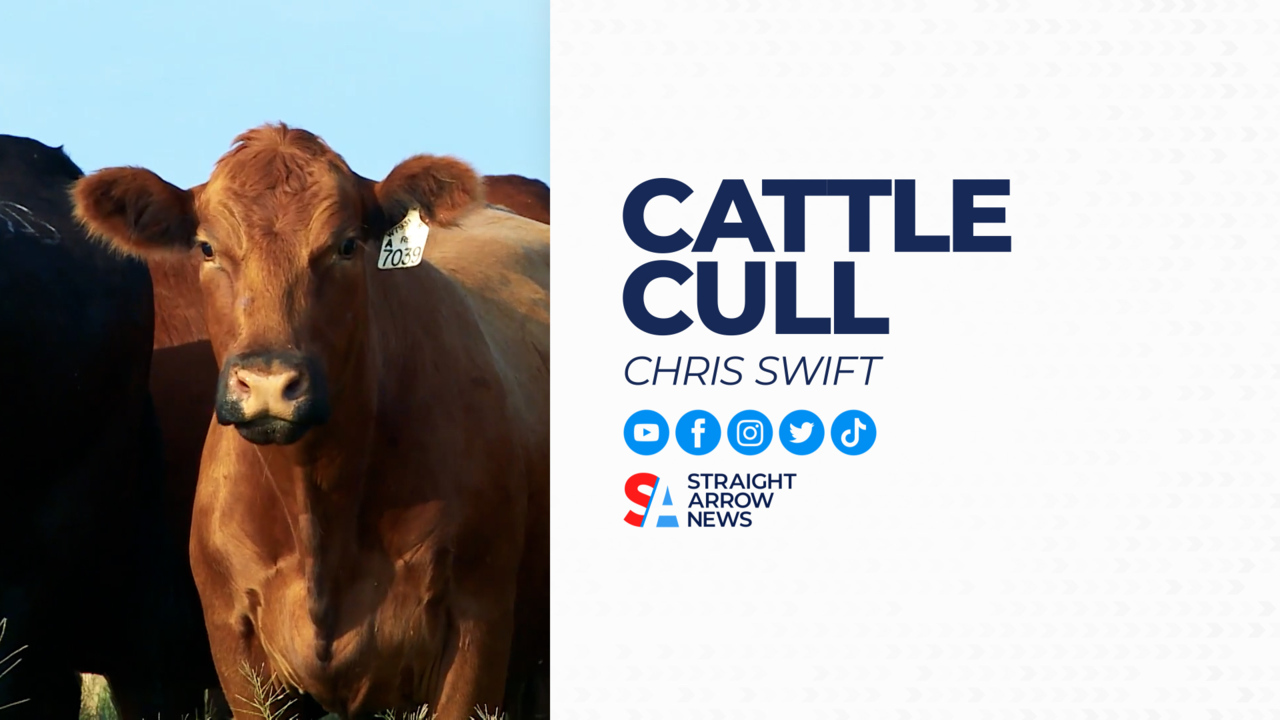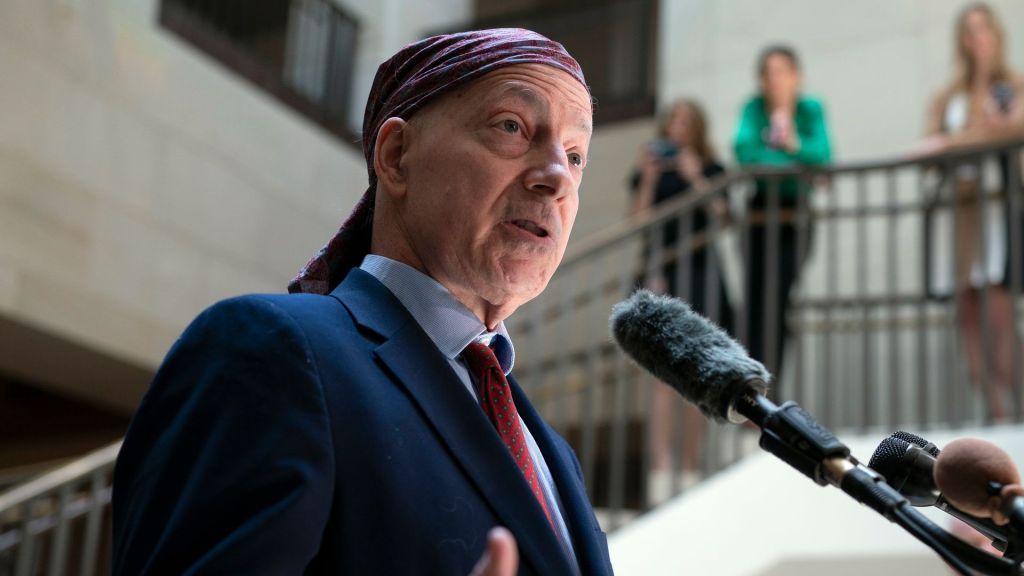
COMMERCIAL: where’s the beef?
SIMONE DEL ROSARIO: We could all be asking that shortly with how things are going in the cattle industry. Widespread drought and heat waves are just two of the many hurdles facing cattle ranchers this year. And the impacts of this summer could have long lasting effects on beef prices and ranchers livelihoods.
I’m joined now by Chris Swift, commodities broker and founder of Swift Trading Company, Chris, thanks for coming on.
CHRIS SWIFT: I certainly do appreciate the opportunity, Simone.
SIMONE DEL ROSARIO: Look, whether it’s a June heatwave that killed 1000 head of cattle in Kansas or ranchers with dried up grazing acres and limited water, how are we seeing the effects of these weather conditions rippled through the industry.
CHRIS SWIFT: Right now we’re seeing a greater cow slaughter. The cow slaughter has been elevated for greater than 14 to 16 months now. It all started primarily in the Northwest where we had Montana, Wyoming, North and South Dakota areas, begun to get really dry last year that impacted the cow herds tremendously there and they started liquidating. This year, they’ve had a little bit of rain and been able to heal some of those pastures. And now we see the drought having moved on in the Texas area, Oklahoma and Kansas and the extreme heats there. What it’s really doing is it’s moving a lot of the cows off of those areas there and bringing in a lot more heifers into the slaughter mix.
SIMONE DEL ROSARIO: What goes into the decision to cull down these herds?
CHRIS SWIFT: Well, a lot of it is just simply water and feed costs. So when you’re talking about the cow-calf industry, pasture condition is the primary issues of what they have. And the water rights is what what they’re dealing with right now, the inability to get water. So when you look at it as how that passes on through to it, we produce fewer animals into the future there, those fewer animals there, then go into our beef process there and it pertains to less beef going down the road.
SIMONE DEL ROSARIO: With this kind of herd sell off, how long do you think it’s going to take to be able to build back up? I know that the latest USDA numbers are showing that cattle inventories already shrinking, it’s now the lowest it’s been since around 2015.
CHRIS SWIFT: And that’s true. And it’ll take years. if we look at what the gestation period of a cow is, it’s approximately nine months. So even if they begin today, it would be nine months before the first calves are born. And then it’s approximately another 16 to 24 months before those cattle reach to the weights where they can be slaughter level cattle. So we understand that going through this process of trying to figure out how it’s going to all improve in the timeline of it. First, we have to get the pastures healed back up again, ability to cut hay so we can have forage throughout the winters. And then let those cows grow up enough. So if we go back to the 2012 and 13 timeframe, we began expansion right around 2013. And it wasn’t until 2016 Until we began to see the real impacts of greater herds.
SIMONE DEL ROSARIO: And then let’s throw another wrench into this equation because the USDA livestock analysts recently said they’re seeing more females in feedlots. So I imagine that only exacerbates that timeline when you’re taking breeding stock and sending them off to slaughter.
CHRIS SWIFT: There’s no doubt and the heifer slaughter has increased greatly. We usually run somewhere between 55 to 60% of steers on feed, and then the other is a heifer. So as we see that heifer number increase, we know that we’re slaughtering our breeding capacity for future production.
SIMONE DEL ROSARIO: What impacts do you see this having on prices already, people are paying about 12% more than a year ago for beef. With inflation running as high as it’s been, I think we’ve been looking for any sign in any industry for a slow down. It doesn’t look like that’s going to happen here.
CHRIS SWIFT: Probably not, um, the price to the consumer is pretty much fixed right now, in my opinion, I don’t think that retailers want to raise that price too much and the margins, that’s available to the end retail sellers and to the packers there are at a level that they don’t want to see that slip any further than where it is. So the likelihood of them raising beef prices to the consumer and maybe stifling some of the demand is not very good. I don’t think you’re gonna get a significant increase in beef production anytime soon, either. So we really don’t expect the price to go down. And we’ve been sitting around $270 and underway for boxes over the last several months. I doubt very seriously we’ll see that change until we get into a greater timeframe whether there’s either more cattle to slaughter or less and I think that’s closer to the fourth quarter before it is right now.
SIMONE DEL ROSARIO: And then when you’re talking about margins, I mean, we think about the cost of raising up these herds anyway, the pain that we’re feeling as Americans who aren’t ranching, but we have our farmers and ranchers that are having to pay more for diesel right now for fertilizer and of course for feed as well.
CHRIS SWIFT: Oh, there’s no doubt and those input costs really ratchet up significantly. And unfortunately, when we see what the price of the live cattle sells for, it really doesn’t make up the premiums that we had to pay for the input costs to it.
SIMONE DEL ROSARIO: Are we seeing people leave the industry? Are we seeing people sell off entire herds?
CHRIS SWIFT: We’ve seen some, I think it’s just kind of a culling liquidation right now to keep the herd together as much as possible. And they can cull that herd down to certain levels. And then beyond that, it makes it very difficult to reestablish those herds. But right now, I think all they’re doing is just culling down to levels that they can maintain until we see if it rains and right now unfortunately, there’s not much rain into the forecast right now. So in another month, if we haven’t seen any changes, they’re more likely you’ll see another increase in the cow slaughter.
SIMONE DEL ROSARIO: Chris Swift, founder of Swift Trading Company, thank you so much for your time and expertise today.
CHRIS SWIFT: Thank you for having me Simone I appreciate it.






